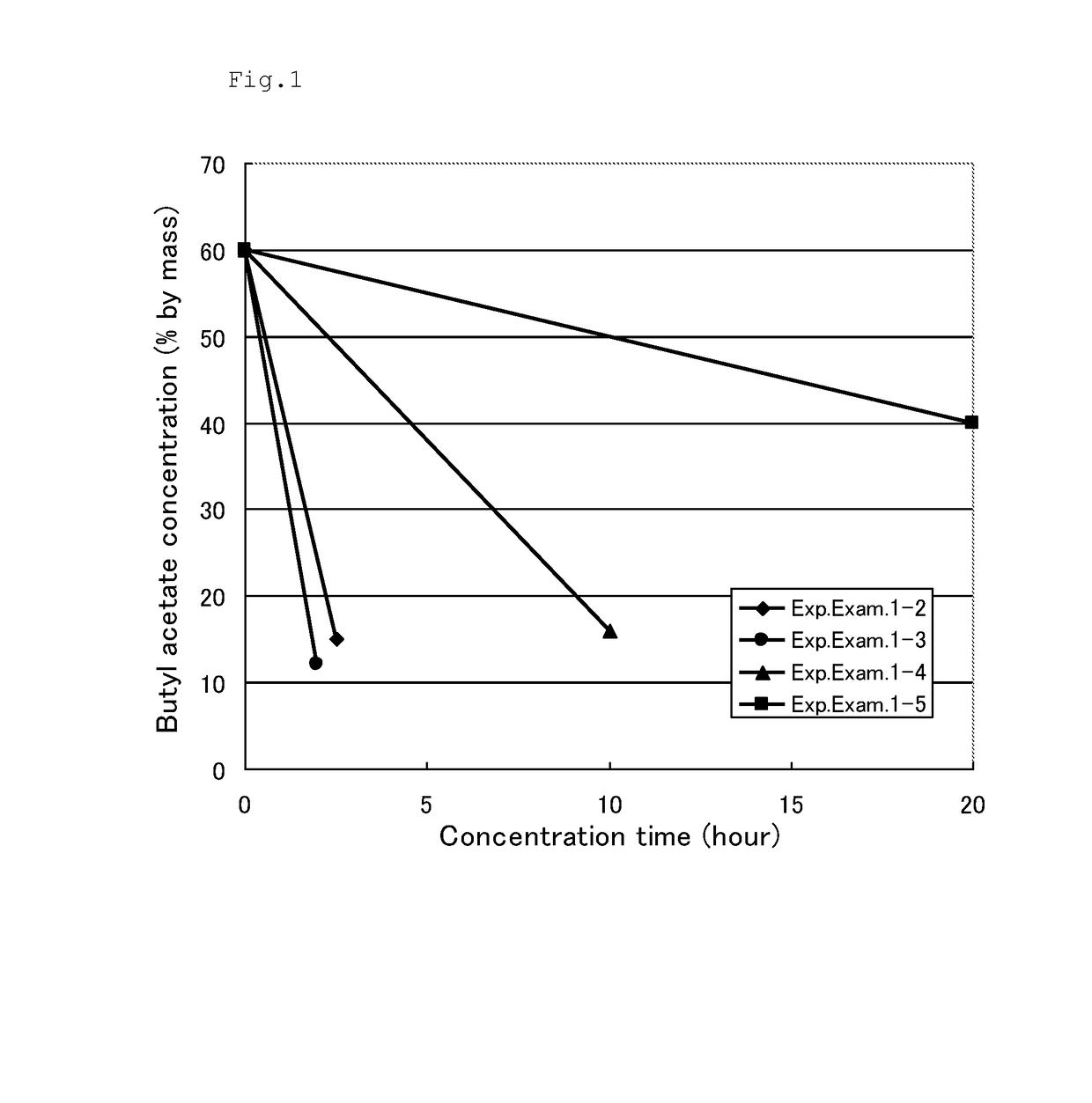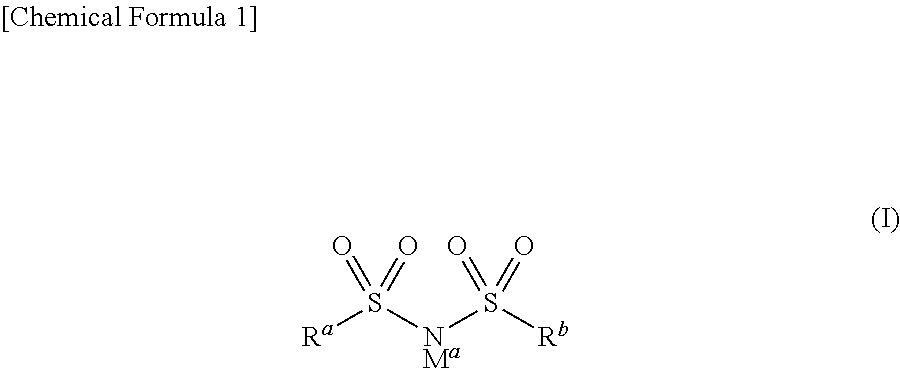Alkali metal salt of fluorosulfonyl imide, and production method therefor
a technology of fluorosulfonyl imide and alkali metal salt, which is applied in the direction of final product manufacturing, sustainable manufacturing/processing, and separation processes, etc., can solve the problems of deterioration of voltage endurance of electrolytic solution, difficult to reduce water content in product, and corrosion of the members (electrodes, etc.) of the device, and achieve excellent heat resistance
- Summary
- Abstract
- Description
- Claims
- Application Information
AI Technical Summary
Benefits of technology
Problems solved by technology
Method used
Image
Examples
experimental example 1
Experimental Example 1-1
[Fluorination Step]
[0114]To a reaction vessel A (internal capacity 10 L) made of Pyrex (registered trademark) and equipped with a stirring device, 1800 g of butyl acetate was added under a nitrogen current, and 200 g (934 mmol) of bis (chlorosulfonyl) imide was added dropwise to the reaction vessel A at room temperature (25° C.)
[0115]To the resultant solution of bis(chlorosulfonyl) imide in butyl acetate, 101 g (982 mmol, 1.05 equivalents relative to bis (chlorosulfonyl) imide) of zinc fluoride was added at once at room temperature, and the mixture was stirred at room temperature for 6 hours until the zinc fluoride was completely dissolved.
[Cation Exchange Step 1-Synthesis of Ammonium Salt]
[0116]To a reaction vessel B (internal capacity 10 L) made of Pyrex (registered trademark) and equipped with a stirring device, 540 g (7928 mmol, 8.49 equivalents relative to bis(chlorosulfonyl) imide) of 25% by mass ammonia water was added. To the reaction vessel B, the re...
experimental example 1-2
[0123]A test tube having an outer diameter of 15 mm was equipped with a gas introduction tube and a decompression device. Then, 5 g of the solution of a 45% by mass concentration of lithium bis(fluorosulfonyl) imide in butyl acetate obtained in the cation exchange step 2 of Experimental Example 1-1 was charged into the test tube, and the pressure of the inside of the test tube was gradually reduced down to 2666 Pa. Concentration was started while keeping the degree of reduced pressure, while blowing a nitrogen gas into the solution at a flow rate of 1 mL / minute in a standard condition, and while heating in a constant temperature water tank set at 65° C. When the concentration step was performed for 2.5 hours, the concentration of lithium bis(fluorosulfonyl) imide in the resultant solution was 85% by mass. The heat quantity applied to the concentration step was 17,000 J based on 1 g of lithium bis(fluorosulfonyl) imide.
experimental example 1-3
[0124]Lithium bis(fluorosulfonyl) imide was produced in the same manner as in Experimental Example 1-2, except that, in the concentration step, air was used in place of the nitrogen gas (supply rate: about 1 mL / minute in a standard condition), the temperature of the constant temperature water tank was changed to 75° C., and the degree of reduced pressure was set at 667 Pa. In this case, the time of performing the concentration step was 2 hours, and the concentration of lithium bis(fluorosulfonyl) imide in the solution obtained in the concentration step was 88% by mass. The heat quantity applied to the concentration step was 15,000 J based on 1 g of lithium bis(fluorosulfonyl) imide.
PUM
 Login to View More
Login to View More Abstract
Description
Claims
Application Information
 Login to View More
Login to View More - R&D
- Intellectual Property
- Life Sciences
- Materials
- Tech Scout
- Unparalleled Data Quality
- Higher Quality Content
- 60% Fewer Hallucinations
Browse by: Latest US Patents, China's latest patents, Technical Efficacy Thesaurus, Application Domain, Technology Topic, Popular Technical Reports.
© 2025 PatSnap. All rights reserved.Legal|Privacy policy|Modern Slavery Act Transparency Statement|Sitemap|About US| Contact US: help@patsnap.com



